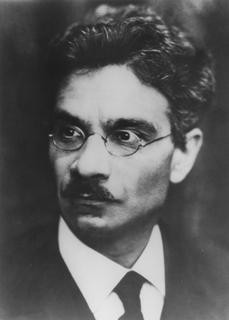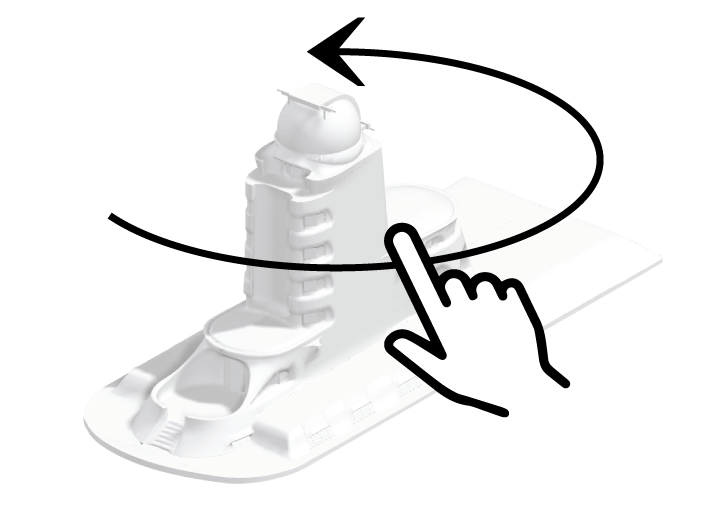Even before Albert EinsteinAlbert Einstein (1879–1955) was one of the most important physicists in the history of science. He began developing the theory of relativity in 1905. In 1914 he joined the Prussian Academy of Sciences and in 1917 became director of the Kaiser Wilhelm Institute for Physics, which had been founded for him as a means to support his work. He won the Nobel Prize in 1921 (awarded in 1922). He spent periods teaching and conducting research in the USA. In 1932/33 he went to Princeton, never to return to Germany. He was clearly opposed to Nazi Germany and did not renew his ties with the country, even after 1945. He retired in 1946 and continued his work as professor emeritus at the Institute of Advanced Studies in Princeton. had procured him a position at Kaiser Wilhelm Institute for PhysicsKaiser Wilhelm Institute for Physics: Specially established in 1917 for Albert Einstein, it was renamed the Max Planck Institute for Physics in 1948. Einstein was director between 1917 and 1933. The institute was initially housed in Albert Einstein’s flat and was only responsible for providing financial support for the purchase of research equipment and for bursaries. Taken on in 1918, Erwin Finlay Freundlich was the institute’s first (and, until 1920, only) scientific research associate. in 1918, Erwin Finlay FreundlichErwin Finlay Freundlich (1885–1964) was an astrophysicist. In 1910 he became an assistant at the Berlin Observatory. He joined Einstein’s Kaiser Wilhelm Institute for Physics in 1918, becoming its first member of staff. He drew up plans for the Einstein Tower, which was to be the most powerful solar observatory in Europe. He was made director of the Einstein Tower in 1920. He was expelled by the Nazis and became a professor of astronomy in Istanbul. He was offered a professorship at the German University in Prague in 1936 and fled to Holland in 1939. He then took up a post at the University of St Andrews in Scotland, where he established an astronomy department, together with an observatory. He became Napier Professor of Astronomy in 1951. was already at work planning the instrument that he hoped would enable him to run empirical tests on the relativistic red shift of light from the Sun. Freundlich made use of his connection with Erich MendelsohnErich Mendelsohn (1887–1953) studied architecture at the Charlottenburg (Berlin) and Munich universities of applied sciences. He married Luise Maas in 1915. After returning from the First World War, he founded his own practice in Berlin – it became the best-known and most successful architecture office in Germany. In 1933 he emigrated to England, before moving to Jerusalem in 1939 and then to the USA in 1941. He built important works in all these countries., whom he had got to know through his friendship with Luise MendelsohnLuise Mendelsohn, née Maas (1894–1980), studied cello in London, Leipzig, and Berlin. She met Erich Mendelsohn in 1910 and married him in 1915. Their daughter Marie Luise Esther was born in 1916. She abandoned her musical career and supported Erich when he started his own practice. Many of Erich’s jobs, including the commission for the Einstein Tower, can be traced back to the network Luise established. After the Mendelsohn family were forced out of Germany by the Nazis, Luise secured many new commissions for her husband. After Erich’s death, she organised his estate.. Mendelsohn turned Freundlich’s scientific ideas into architectural sketches. A dialogue developed between Freundlich and Mendelsohn in which they traded ideas about technical viability and the architectural and aesthetic dimensions of implementation.

Freundlich needed money to realise the instrument, which was becoming more and more like a building. To start with, acquiring funds was a rather arduous business. This continued to be the case until November 1919, when (Arthur Eddington text: Arthur S. Eddington’s) expedition furnished proof of Einstein’s theory of relativity. Overnight, talk of Einstein and the theory of relativity was on everyone’s lips, extending beyond the narrow realms of (astro)physics. Einstein was now famous, and the fact that an Englishman had proven his theory wounded the Germans’ national pride, which was still thriving even after defeat in the First World War. In putting out an appeal for an “Einstein Donation Fund”, Freundlich made deft use of this state of affairs: “Albert Einstein’s research on the general theory of relativity signifies a turning point in the evolution of the natural sciences, comparable only to the work associated with names like Copernicus and Newton.… The academies of England, America, and France have recently appointed a commission – from which Germany is excluded – to conduct thorough experiments on the fundamental principles of the general theory of relativity. It is incumbent upon those who attach importance to Germany’s cultural standing to raise the funds, each according to their ability, that will make it possible for at least one German observatory to test the theory in direct collaboration with its author.” In December 1919 Freundlich sent this appeal to potential sponsors from the realms of industry and commerce and raised 350,000 Reichsmarks (RM) within the space of a year. In the end, the Einstein Donation Fund exceeded RM 1 million, “the little bit of Mammon” that Einstein was convinced Freundlich would be able to secure.
As a result, the Prussian government also got involved, injecting RM 150,000, a sum that was later topped up with a RM 50,000 supplement. Freundlich also managed to persuade companies like Carl Zeiss in Jena and Schott & Co. either to donate optical equipment and instruments to the Einstein Tower or to sell them to him at the production price. With the financing for the Einstein Tower now in place, Freundlich was finally in a position to officially commission Erich Mendelsohn to plan the architecture. The idea was for the Einstein Tower to become a research instrument that would be more powerful than anything else existing in Europe at the time. The building became so famous that it went down in the annals of architectural history even before it was completed.



